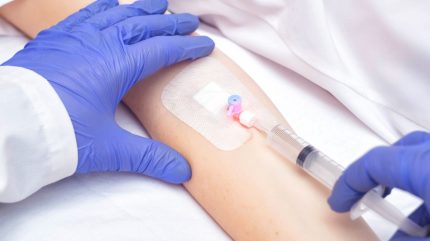
The US Food and Drug Administration (FDA) has approved Takeda’s new immunoglobulin (IG) therapy, Gammagard liquid ERC [immune globulin infusion (human)], to treat primary immunodeficiency (PI) in individuals aged two years and above.
PI is typically caused by genetic mutations that can be passed down through families. Symptoms vary widely and often include recurring or long-lasting infections.

Discover B2B Marketing That Performs
Combine business intelligence and editorial excellence to reach engaged professionals across 36 leading media platforms.
Gammagard liquid ERC is the only ready-to-use liquid IG therapy with less than or equal to 2µ/ml two micrograms per millilitre of Immunoglobulin A (IgA) in a 10% solution, and can be administered either intravenously or subcutaneously.
Takeda plasma-derived therapies business unit research and development senior vice-president and head Kristina Allikmets stated: “The approval of Gammagard liquid ERC reinforces our commitment to supporting individualised treatment approaches for people with primary immunodeficiency, including a therapeutic option that has the lowest IgA content of any ready-to-use liquid immunoglobulin therapy, and can be administered intravenously or subcutaneously.
“Gammagard liquid ERC uses the same state-of-the-art manufacturing process as our other ready-to-use liquid immunoglobulin formulations and is aligned with our forward-looking strategy to prioritise reliable supply while offering a broad range of immunoglobulin therapies to address varied patient needs.”
Takeda anticipates commencing commercialisation efforts for Gammagard liquid ERC in the US by 2026, with plans to follow suit in the European Union (EU) by 2027.

US Tariffs are shifting - will you react or anticipate?
Don’t let policy changes catch you off guard. Stay proactive with real-time data and expert analysis.
By GlobalDataGammagard liquid ERC is approved under the brand name Deqsiga by the European Medicines Agency.
In June 2025, the European Commission authorised Takeda’s Adcetris (brentuximab vedotin), an antibody-drug conjugate, combined with chemotherapy for treating adults who are newly diagnosed with Stage IIb Hodgkin’s lymphoma with risk factors or at Stage III/IV.





